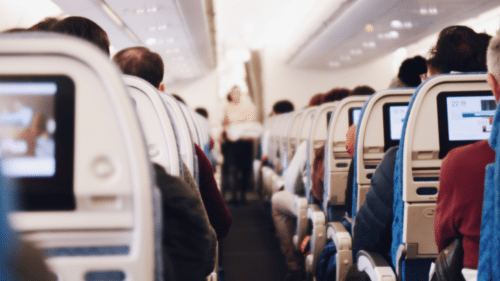Human Factors in Aviation: The Crucial Role of Training
In a high-stakes and complex industry like aviation, it is crucial to prioritise training that enhances knowledge, skills, and attitude. Non-technical skills such as the ability to work together as a team, communicate effectively, and make decisions under pressure are particularly crucial when it comes to ensuring a high level of safety and efficiency.
In this article, we shed light on the crucial role of Human Factors training when it comes to reducing human error and enhancing overall safety.
What Are Human Factors?
In simple terms, human factors are about understanding how people think, feel, and act in different situations and how certain psychological, social, and physical elements affect the performance and safety of pilots, cabin crew, and maintenance staff.
The Human Factors and Ergonomics Society defines human factors as “concerned with the application of what we know about people, their abilities, characteristics, and limitations to the design of equipment they use, environments in which they function, and jobs they perform.”
(Source: What Is Human Factors and Ergonomics?)
 The Dirty Dozen is closely linked to Human Factors and describes the 12 most common causes of human error.
The Dirty Dozen is closely linked to Human Factors and describes the 12 most common causes of human error.
Human Factors Training: An Investment in Safety and Skills
Over the years, training in human factors has become an integral regulatory requirement on the operational side and maintenance side.
Training is not just a way to stay compliant. Training is an important investment in safety, resilience, and skills.
With training, aviation professionals get the psychological insights and skills necessary to make safe decisions, communicate and work as a team, manage stress, and mitigate errors more effectively.
Essentially, Human Factors training is a continuous investment – and not just a tick mark.
From Classroom to Cockpit
An experienced pilot is flying from Madrid to New York. Mid-flight he and the co-pilot encounter turbulent weather with lightning strikes and heavy winds. With their human factors training in mind, they can make safe decisions by assessing the situation and displaying a calm demeanour. This transforms a potential disaster into a safe flight. In other words, their human factors training is not just an annual requirement; it is the very core of their flight expertise, situational awareness, and decision-making skills.
During turbulence, the crew in the cabin must ensure the passengers’ safety and comfort – as well as their own. The cabin is a place filled with human factors, but their training empowers the cabin crew to work together, communicate, and make decisions as a team while facing challenges and averting crises.

In a hangar not far from Munich, an aircraft mechanic is installing nuts, bolts, and wires in a King Air. For her, human factors go beyond routine. Her training is essentially a proactive shield against human error. With her training in mind, she has become more attentive to detail. She also knows how to communicate properly with her colleagues, and as a team they can prevent potential errors which might turn into accidents.
The three short scenarios above illustrate the importance of human factors training and emphasise why organisations must prioritise and invest in training.
In what ways do you believe Human Factors training plays a crucial role?
Read more: The Ultimate Checklist for Human Factors Training

